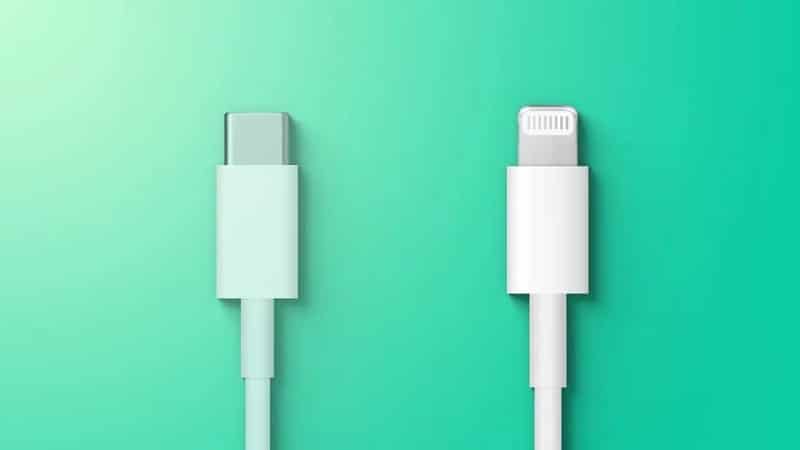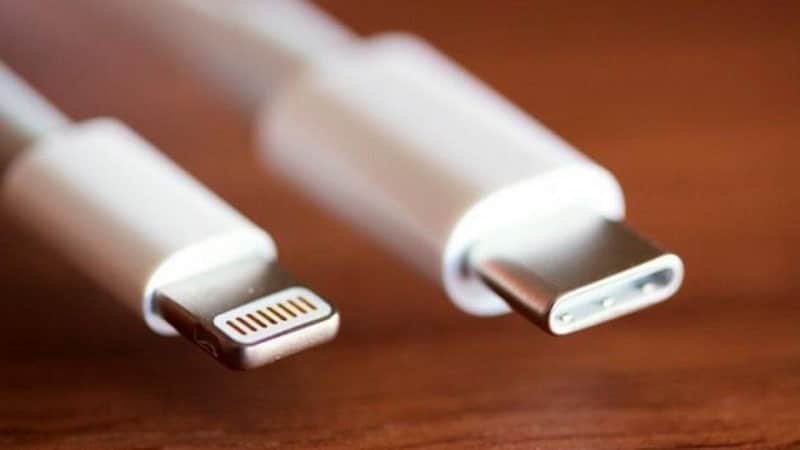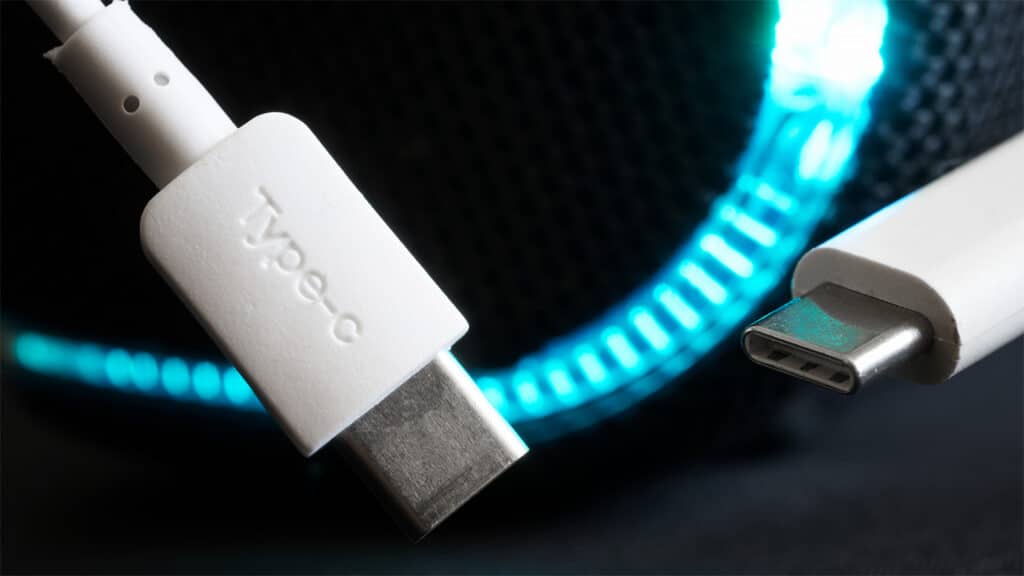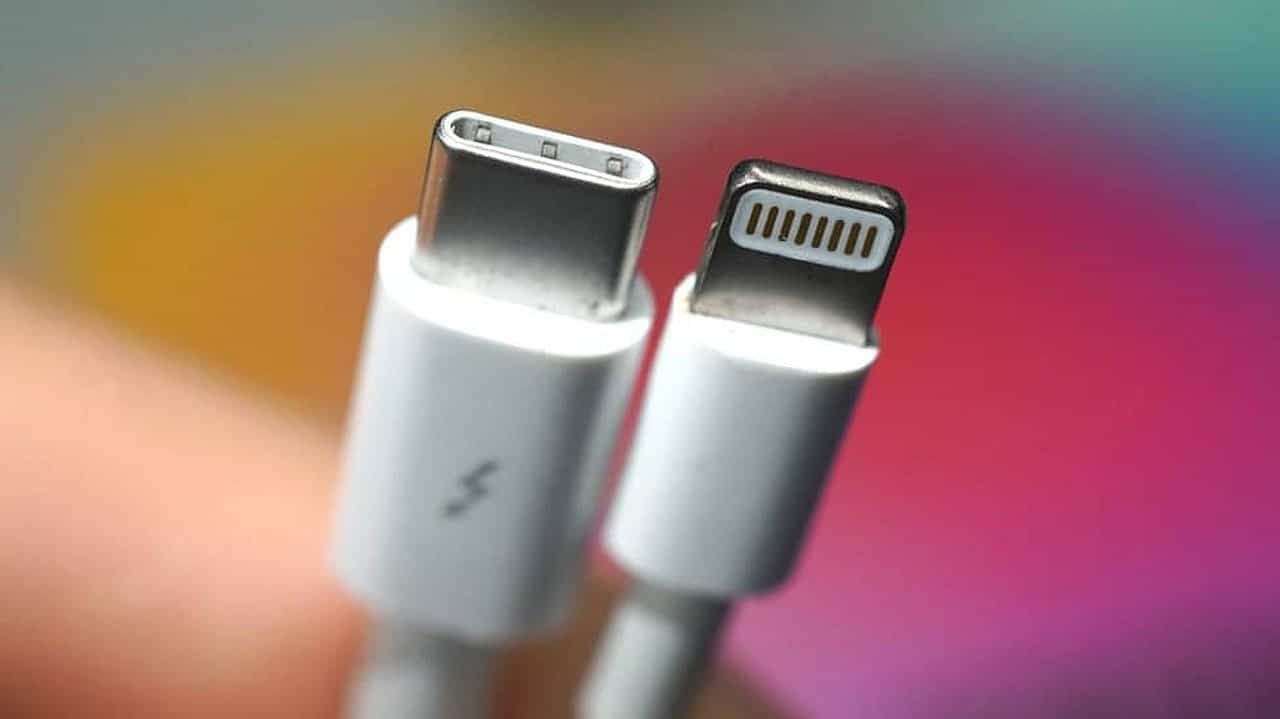L‘European Union wants a single standard for smartphone charging: one cable for all devices on the market. This could for the first time force Apple to produce a iPhone with attack USB-C instead of a door Lightning: but for users, what are the pros and cons?
Lightning vs USB-C, what are the pros and cons for iPhone
On 7 June 2022 the European Parliament approved new rules for the smartphone market. From autumn 2024, all mobile devices, tablets and cameras in the European Union will need to have the same standard for charging via cable: USB-C. For the EU, this choice reduces e-waste because only one charger is needed for all devices. Something that could also lead to savings for users in the long run.
Those who oppose this proposal mention the amount of Lightning cables that will become useless, a source of electronic waste. It also worries the disincentive to innovate: why should manufacturers invest in new charging technologies (even if the innovation remains within the constantly evolving USB-C standard)?
But beyond the political and ecological positions, what would be the pros and cons for iPhone users if a USB-C port comes along? What Lightning features would be lost?

Lighting cable: advantages and disadvantages
In 2012, Apple launched its proprietary and exclusive Lightning socket with a 8-pin connector to replace the previous 30-pin cable. 1.5mm thick and 6.7mm wide, it can be inserted in both directions without problems. One of the great advantages of the Lightning cable is that it is a plug ‘male‘: this means that i pins are directly on the plug and not on the door. This means that if they wear out (perhaps simply because you pull the cable out too hard or in the event of a fall), you need to replace the cable and not the socket on your iPhone.
The Lightning cable is now ten years old and in terms of performance it feels. In most situations, it achieves data transfer speeds comparable to the previous USB 2.0 standard: circa 480Mbps. A problem especially considering the size of large files such as videos ProRes, which when shooting in 4K can weigh from 3GB up to 6GB per minute. Apple does not share official data on transfer speeds, but in tests it appears that some new iPads have speeds closer to those of USB 3.0. But so far, no iPhone has reached speed superiori ai 480Mbps.

As for charging speeds, iPhone 13 Pro Max reaches 27W with the right adapter. A rather quick recharge, even if still far from the 150W of some Android smartphones released this year. The speed however also depends from battery technology, not just the cable: at the moment so it is not a problem, but it could limit in the future.
The fact that Lightning is a proprietary standard from Apple ensures a certain build quality with the program Made for iPhone, which certifies the cables. However, the fact that is not compatible with other devices it may involve additional costs. For example, if you bought a pair of earphones outside the Apple ecosystem (not AirPods), it happens more and more often you do not find a charging cable inside. In this case you would find yourself forced to buy a separate USB-C cable, while Android users can simply use the one on their smartphone.
PRO
- Easier to fix in case of breakage
- Made for iPhone certification
VERSUS
- Slower data transfer
- Slower charging (potentially)
- Compatibility with other devices
USB-C cable: pros and cons (compared to Lightning on iPhone)
USB-C technology was born shortly after the arrival of the Lightning socket on the iPhone, bringing with it some of the advantages of the rival standard. The main one is the convenience of being able to insert the socket into the door in any direction. But unlike the Lightning, USB-C is a ‘female’ connector: the pins are in the socket, not in the cable. This means that in case of breakage, you will have to replace the socket, which is more difficult than what happens with the Lightning.
As for data transfer speeds, USB-C can handle the standards of USB 3. This means that, depending on the generation, it runs at different speeds. USB 3.1 Gen 1 goes up to 5Gbpsthe Gen 2 up to 10Gbps and the fastest standard at the moment, the Thunderbolt 3, goes up to 40Gbps. Recognizing the various generations can be confusing. But what is clear is that data transfer is always faster on USB-C than Lightning, regardless of generation.

As for charging, USB-C can manage from 3A up to 5A (the Lightning cable reaches 2.4A). This gives USB-C a speed advantage. Apple could charge iPhones as fast as it charges MacBooks, if it wanted to.
Perhaps the most obvious advantage however is in terms of compatibility. Not only most devices (smartphones, tablets, headphones and increasingly laptops) can charge with USB-C. The standard is compatible with DVI, VGA, HDMI e DisplayPort, they allow interesting applications also in a future key (maybe one dock station to use iPhone as a computer).
Regarding safety, USB-C cables must also receive certification in order to use the abbreviation. If you buy quality products, the resistance of the cables remains at the same level.
PRO
- Great speed to transfer data
- Faster charging
- Greater compatibility
VERSUS
- More difficult to remedy in the event of a breakdown
- Many different and difficult to navigate standards
Pros and Cons of USB-C and Lightning: Will Apple Really Switch Ports?
USB-C technology has obvious advantages, which Apple itself recognizes. From Macs to Displays to iPads, there are many Apple products that use the USB-C socket for fast data transfer and the possibility of recharging. And given the ability to shoot video in ProRes and Apple’s computational capabilities increasingly as a “base computer” for many users, adopting the standard would make sense.
On the other hand, longtime Apple customers should change existing accessories (those for cars or power banks, for example). Also, in case the pins break they would find themselves forced to send iPhones for repair.
Apple would have the opportunity to bet on wireless, something already hypothesized by the Apple. But if he reloads it MagSafe it works well at the moment it does not support data transferthe. Furthermore, there would remain the problem of making all the accessories purchased by users over the years useless.
Cupertino would end up displeasing iPhone users who want USB-C if it didn’t change, but changing it would make Lightning worshipers nervous. Perhaps EU legislation can allow Apple to introduce with iPhone 15 in 2024 the new standardthen blame Europe when users (inevitably) complain. And maybe Apple’s engineers will find a way to make it easier to replace a broken USB-C port by remedying the core technology problem.
We will find out over the next year. We will keep you posted.















Leave a Reply
View Comments